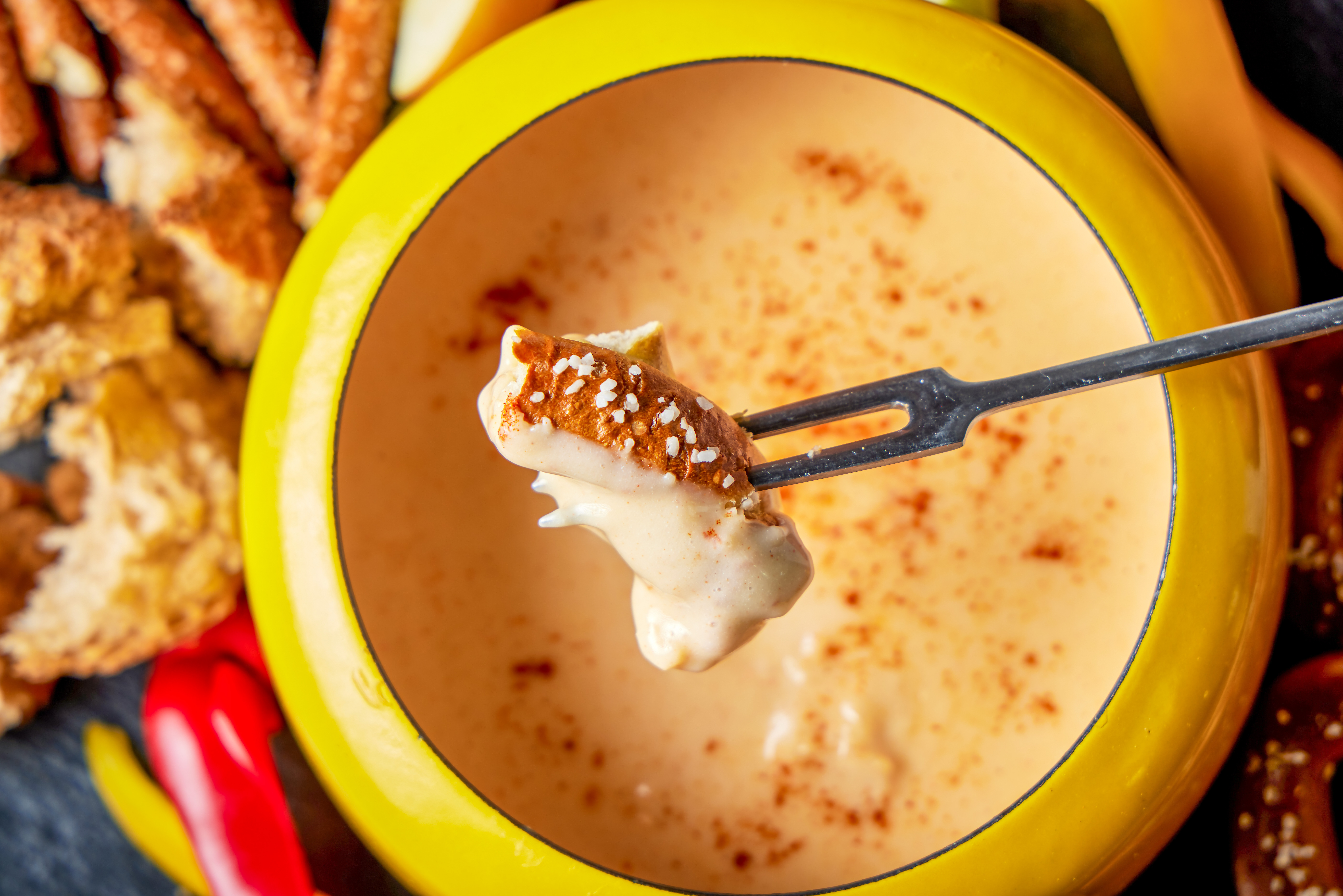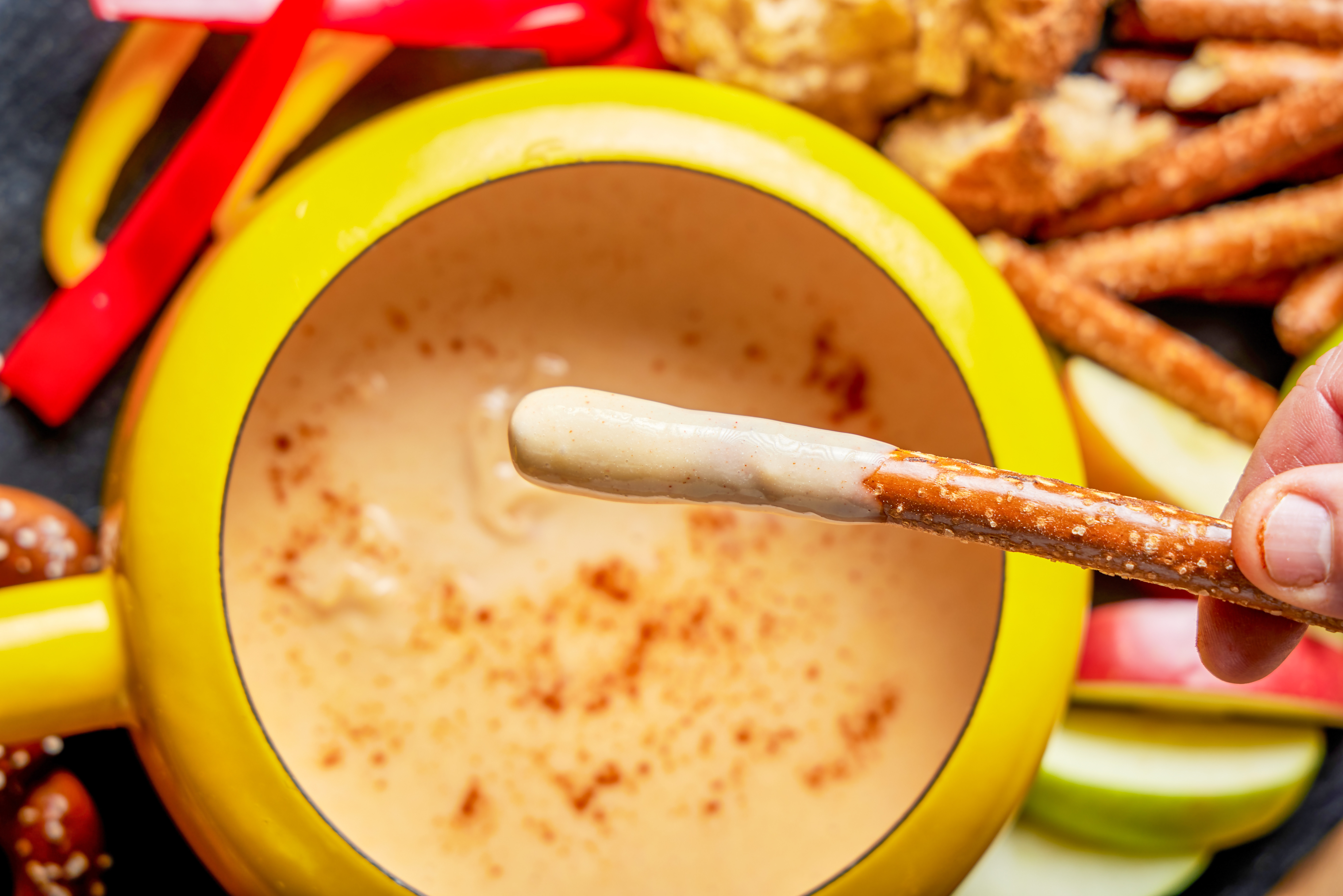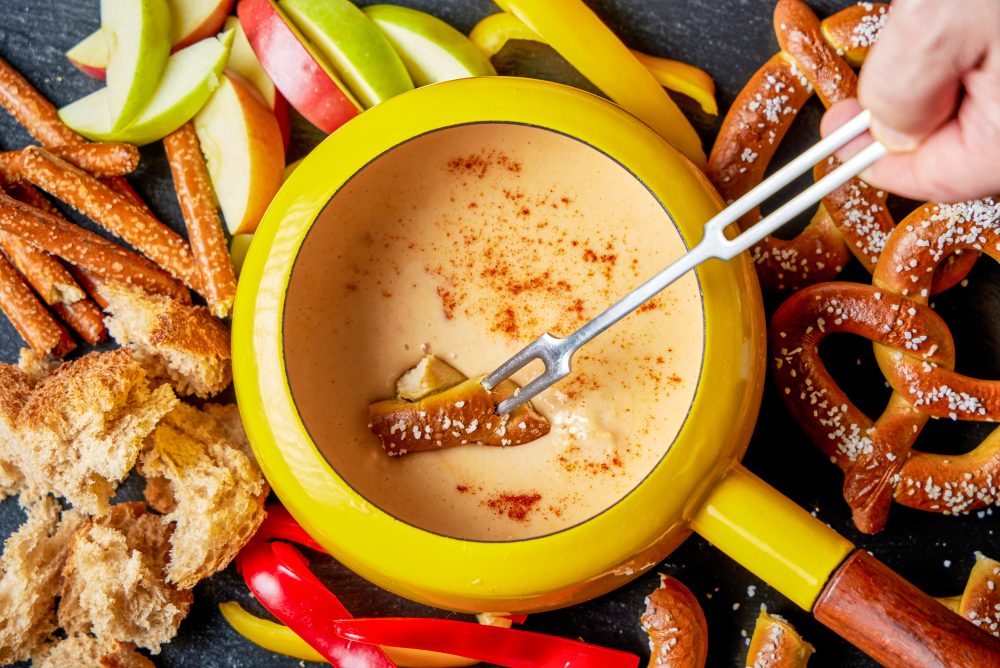Everyone needs a good cheese sauce recipe in their back pocket, whether it’s an easy fondue, classic beer cheese, or nacho cheese that doesn’t sacrifice flavor for texture.
A sauce that acts like Velveeta and tastes like an aged sharp cheddar or nutty Gruyère? That’s the platonic ideal of dip-able dairy.
What you can learn from Velveeta (even if you don’t like it)
The IUPAC-sounding ingredients on a box of processed cheese may give you pause (or even a brief scare), but there’s no reason to fear chemical names—even long ones. Everything is a chemical, including water, which could just as easily be written as “dihydrogen monoxide.” Regardless of how you feel about Velveeta, the ingredient list is worth a read from a food science perspective.
Kraft Foods lists Velveeta's ingredients as: milk, water, whey, milk protein concentrate, milkfat, whey protein concentrate, sodium phosphate, and 2% or less of salt, calcium phosphate, lactic acid, sorbic acid, sodium citrate, sodium alginate, enzymes, apocarotenal, annatto, and cheese culture. It's not an especially long list for a processed food, and most of the ingredients are pretty familiar. It's after “2% or less” that things get more interesting. By doing a little research on each ingredient, I was sure I'd hit on the secret to gooey, melty cheese.
Working my way through the list, I found that calcium phosphate was there to hold the milk proteins together, lactic acid brought the tangy flavor we associate with cultured milk products, and sorbic acid was included as a preservative to inhibit the growth of mold, yeast, and fungi.
Then I got to sodium citrate, and a world of cheesy possibilities unfurled.
Sodium citrate is a common processed cheese additive, a near-magical ingredient that can turn any cheese, no matter how hard or sharp, into a creamy sauce that won’t grease out or turn grainy. And while it may sound super synthetic, it’s nothing more than a simple salt—one you can synthesize in your kitchen with lemon juice and baking soda. (It’s also commonly used in restaurant kitchens, but don’t tell them I told you.)
Better dipping through chemistry

Velveeta and similar products owe their uniquely smooth and creamy texture to a class of chemicals known as melting salts, a class that includes sodium citrate. According to Harold McGee’s “On Food and Cooking: The Science and Lore of the Kitchen,” the need for them was originally identified in Switzerland way back in 1912 as a way to mimic tartaric and citric acids found in a fondue’s wine or lemon juice. “Five years later, the American company Kraft patented a combination of citric acid and phosphates and a decade after that it brought out the popular cheddar look-alike Velveeta.”
These days, manufacturers use a combination of melting salts, most commonly sodium citrate and sodium hexametaphosphate. The salts act as emulsifiers, decreasing acidity (increasing the pH) in the cheese and making the proteins more water-soluble. This prevents the proteins from coagulating and keeps the fat from greasing out, which keeps your cheese moving and grooving.
But you don’t have to be a food scientist at Kraft to take advantage of melting salts.
Make your own melting salts with two common kitchen ingredients
In layman’s terms: baking soda + lemon juice = sodium citrate. If you want to get technical with it: Mixing baking soda with the citric acid in lemon juice causes an acid-base reaction to occur. Carbon dioxide gases off, leaving behind sodium citrate dissolved in water. The formula for sodium citrate—Na₃C₆H₅O₇—is easy to remember, as it conveniently spells out “NaCHO.”
It should take roughly 1/2 a teaspoon of baking soda to fully react with 50 milliliters of lemon juice, but not all lemons contain the same amount of acid, and leftover acid will interfere with the pH, making it hard for the melting salt to do its job. If you go the homemade route, you can make sure the reaction is fully complete by adding tiny bits of baking soda after the first 1/2 teaspoon. Stir between each tiny addition—when the mixture no longer fizzes, the reaction is complete, and you’ll be left with enough sodium citrate to handle roughly 7 ounces of cheddar.
But it’s much easier to just order a bag from Amazon or the Modernist Pantry for under 10 bucks. (Just make sure it’s “food grade.”) This is one case where the DIY route doesn’t result in a better product; synthesized food additives generally are more pure, which translates to better, reproducible results.
The last cheese sauce recipe you’ll ever need

Armed with this clever bit of chemistry, culinary director Wes Martin took to the kitchen to create an easy (incidentally gluten-free) cheese sauce that could be adapted for any cheesy occasion, whether you need a spicy sauce for nachos, beer cheese for pretzels, or a classic fondue.
As written, it makes a beautiful beer cheese, perfect for dipping pretzels and apples, but you can switch out the Dijon and paprika for something spicy (like hot sauce or grated jalapeños) if you want to give it the nacho treatment, or a little kirsch and nutmeg, for a classic Swiss fondue vibe.
Ingredients:
- 1 cup pilsner or lager beer
- 2 teaspoons sodium citrate
- 1 pound sharp cheddar cheese, shredded
- 2 teaspoons Dijon mustard
- 2 teaspoons honey
- ½ teaspoon smoked paprika
- Pretzels, apple wedges, bell pepper strips, or crusty bread, for dipping
In a medium saucepan, combine the beer with ½ cup water; whisk in the sodium citrate until dissolved. Bring to a gentle simmer over medium, then whisk in the cheese a handful at a time, making sure it has fully melted before adding more. Remove the pan from the heat.
Add the mustard, honey, and smoked paprika and whisk until well combined and smooth. Serve warm with pretzels, apples, or veggies alongside for dipping.
Join the conversation on Facebook, Instagram, TikTok and Pinterest.
And if you're looking for more Milk Street, check out our livestream cooking classes with our favorite chefs, home cooks and friends for global recipes, cooking methods and more.




